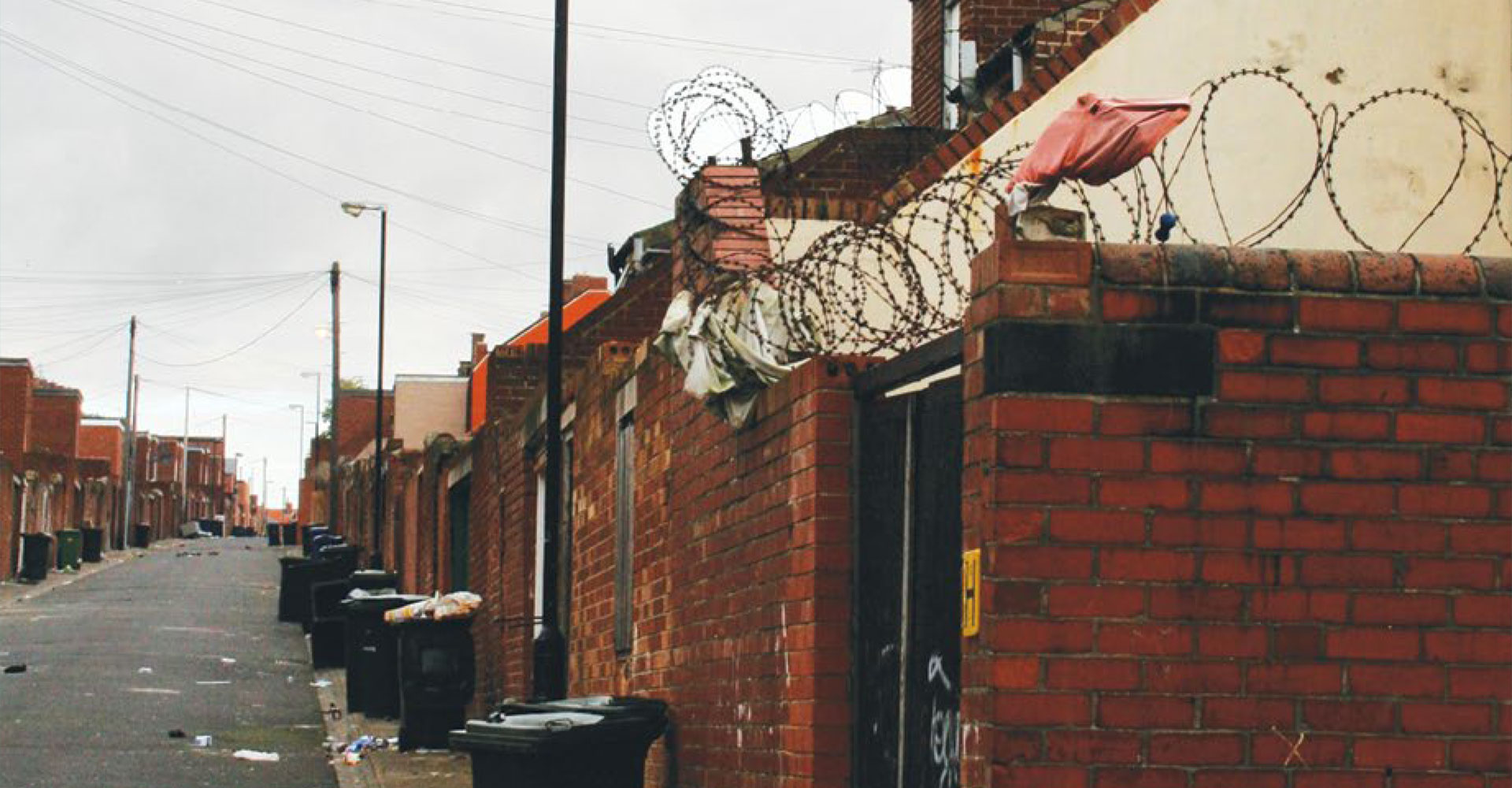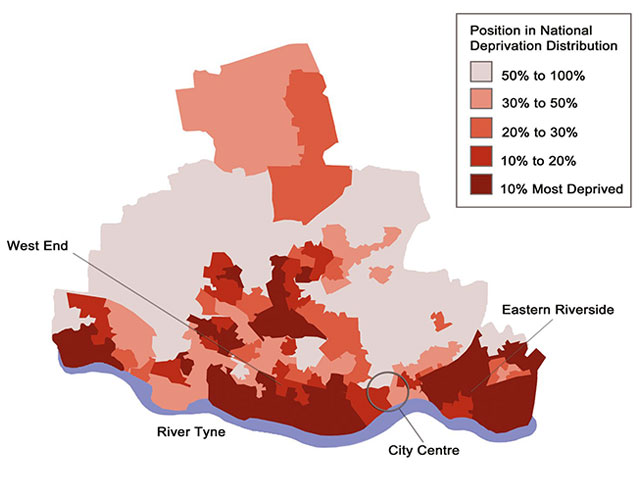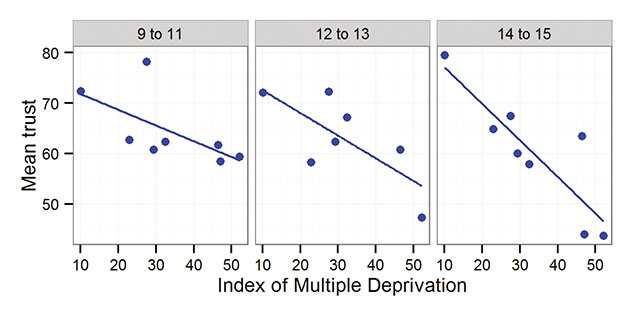Tyneside Neighbourhoods
Who can we trust? Investigating inequalities in access to social capital across Newcastle upon Tyne.
Daniel Nettle and his colleagues spent five years exploring how social life differs from one part of Newcastle to the next.

Inequalities can't all be measured in pounds and pence
Residents of different neighbourhoods in Newcastle have very unequal access to economic capital – to pounds and pence. But there is more to quality of life than how much money you have.
There are also subtle, distributed resources known as social capital – things like:
- having helpful neighbours
- being able to trust strangers
- not feeling threatened when moving about your local area
The inequalities in social capital are less well documented than the more easily countable ones.
Daniel Nettle’s research examined whether economic disadvantage was also accompanied by a lack of social capital across Newcastle neighbourhoods. The results were published in an open access book – Tyneside Neighbourhoods: Deprivation, Social Life and Social Behaviour in One British City – in 2015.
There were two powerful myths at play in the background to the work:
- the old rosy stereotype of working-class communities
- with greater ties and a friendlier ethos than middle-class ones, almost in inverse proportion to their economic constraints
- the more modern stereotype of poor neighbourhoods
- dominated by minor incivilities, anti-social behaviour, broken windows, and fear
The team didn’t want to assume either of these stereotypes was true, though there turned out to be some truth in both of them.
Deprivation map of Newcastle upon Tyne

Deeper shading indicates greater deprivation.
Studying the city
The research deliberately used a mixture of methods:
- many hours of on-street observations
- surveys on trust
- crime statistics
- experiments where people transferred money to one another anonymously
- dozens of deliberately dropped wallets and bags of shopping
- a study where people were randomly bussed to different parts of the city
The conclusions were rich and in some ways paradoxical.
In poorer neighbourhoods compared to more affluent ones, residents:
- interacted more
- spent more time on the street
- were more likely to be with people from other households
Yet they were:
- much less trusting of their neighbours and people in general
- at greater risk of violence
- much less satisfied with neighbourhood life
Index of Multiple Deprivation:
Trust in others by age amongst 1,000 Newcastle young people

The index of multiple deprivation is a measure of neighbourhood poverty (higher equals poorer). Young people from poorer neighbourhoods trust less; the effects become more marked as they get older.
There’s a chicken and egg problem here. Are communities under-performing economically because of their low social capital, or does poverty erode the basis of social life? And what is the solution?
Here, the findings were somewhat more encouraging.
The research showed that to make people feel more trusting, they needed to move to less degraded physical environments (less litter, more orderly). This suggests that social capital is not set in stone. Simple interventions to make the environment more pleasant might immediately improve trust and social interaction. This has all kinds of knock-on benefits.
A matter of social justice
On the issue of social justice, Professor Nettle said: “Access to the ingredients necessary for a strong social life is a matter of social justice. The costs and benefits of economic change have been borne and enjoyed unequally. People with similar means and problems cluster together spatially in cities. This has led to great divergences in social experience, even over the scale of a mile or two. Solving these kinds of inequalities requires holistic thinking that cuts across planning, economic development, social policy and public health.”
He concludes: “More can be done to reduce inequalities in the whole population’s health through investment in the local urban environment than in spending more on hospitals, which affect only a few people, and those already sick.”
It is short-sighted that, in a time of rising inequality in physical and mental health, funding to local government for neighbourhood services is being cut.
